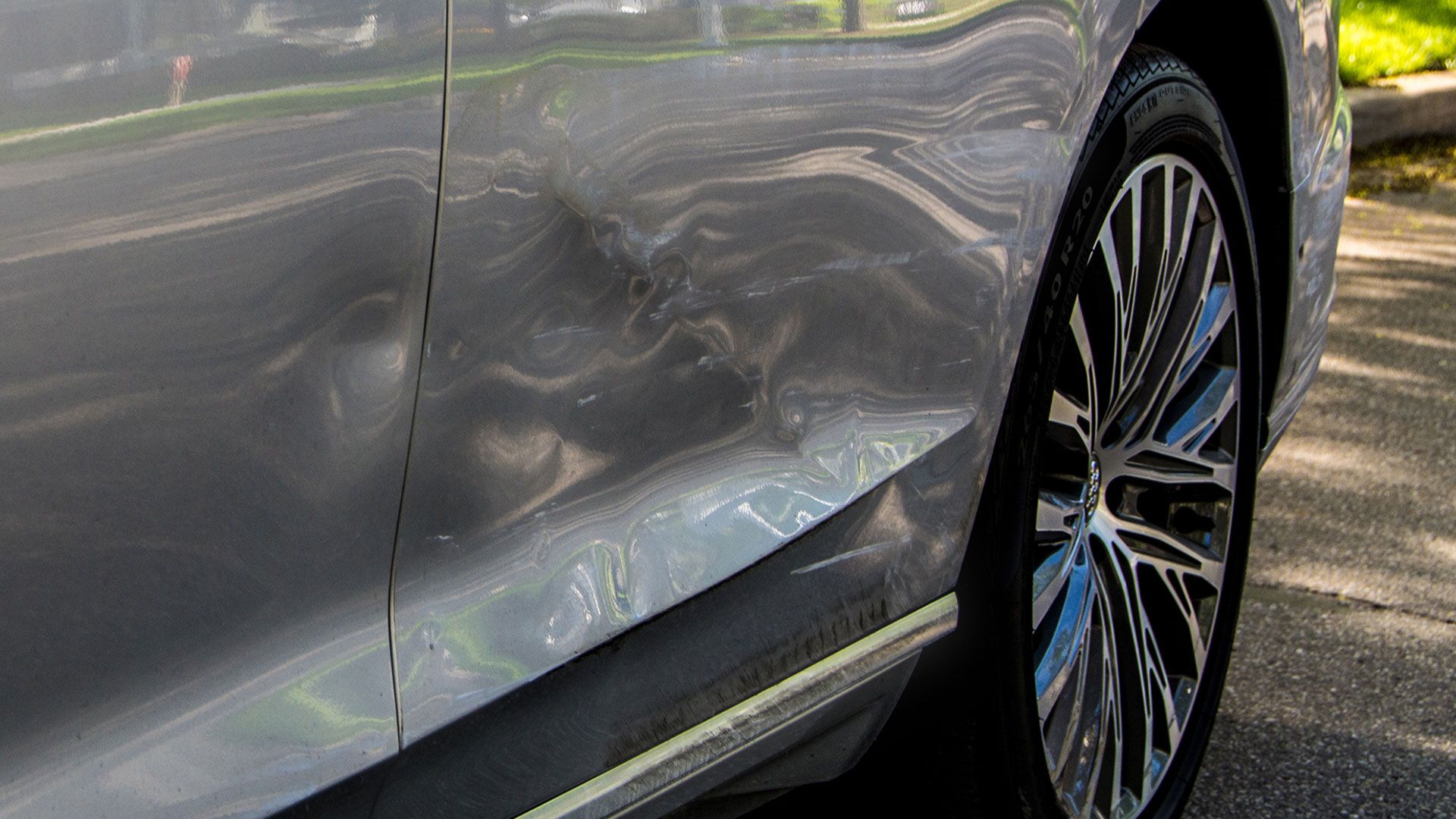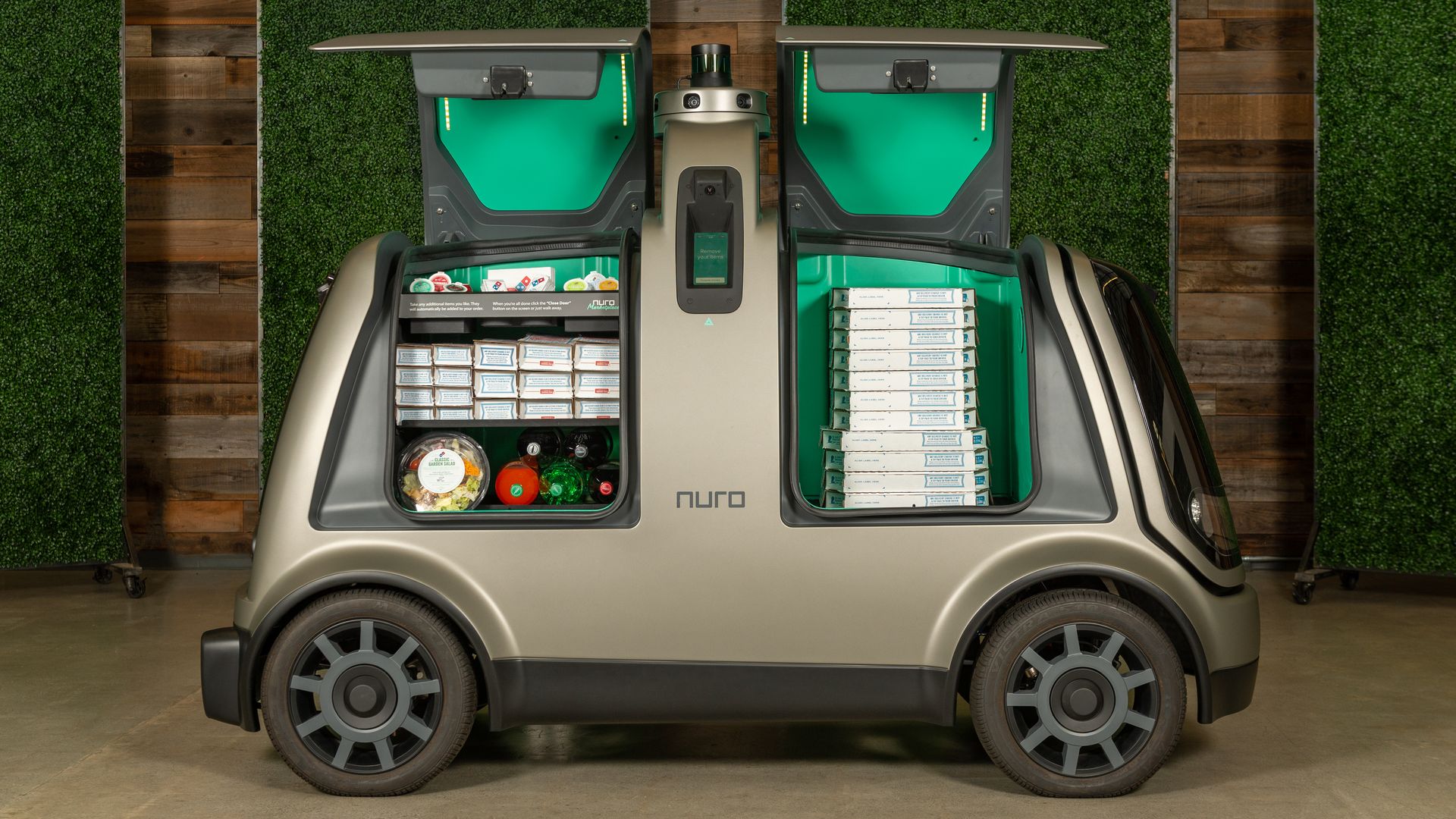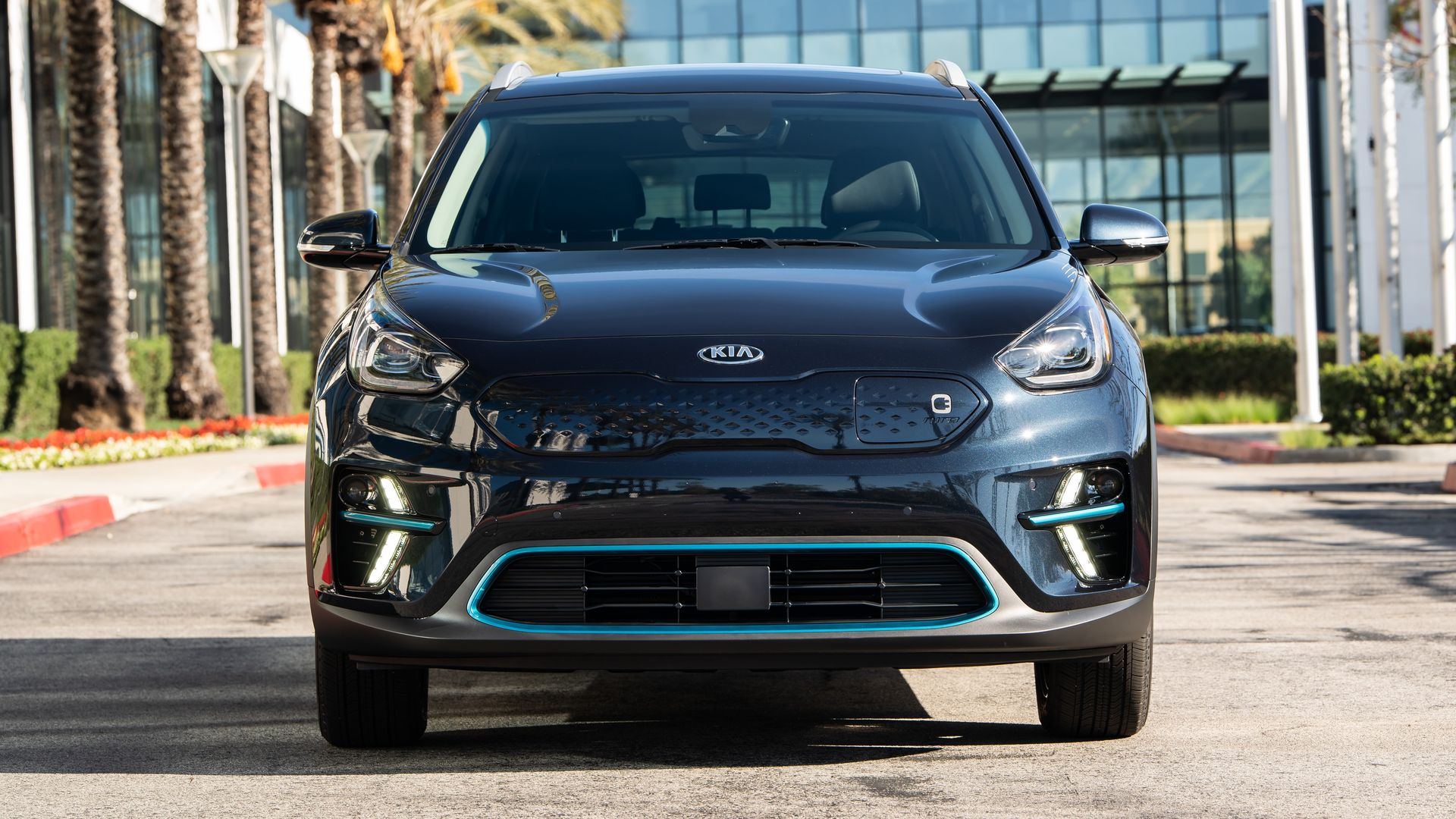Robots and humans
By Joann Muller
1 big thing: When robots and human drivers collide
Illustration: Rebecca Zisser/Axios
Self-driving cars won’t be here anytime soon, which means partially automated vehicles will have to coexist with traditional cars for many years. That could get expensive.
The big picture: New cars are safer than ever thanks to crash avoidance technologies like automatic emergency braking and lane departure warning. But all the safety gizmos in the world can’t prevent other, less-equipped cars from crashing into you — which, unfortunately, I learned firsthand recently. (More on that below.)
The catch: Vehicles equipped with advanced driver assistance systems (ADAS) can cost twice as much to repair after a collision because all those embedded sensors have to be replaced and recalibrated by specialists, warns AAA.
- A minor fender bender that damages or dislodges a sensor hidden behind a windshield, bumper or door mirror can add up to $3,000 in extra repair costs, the agency found.
- High-tech cars like Teslas can be particularly expensive to repair: A friend had $38,000 worth of repairs on his $50,000 Model 3 after two minor incidents. His insurance paid all but his $1,000 deductible.
- Even a chipped windshield can be expensive to repair if the front-facing camera has to be recalibrated.
As breakthroughs in vehicle safety go, the benefits of automatic emergency braking (AEB) are on par with seatbelts, antilock brakes and electronic stability control.
- AEB uses a combination of sensors such as radar, cameras or lasers to warn of an imminent collision and hits the brakes if the driver doesn’t react quickly enough, cutting the chances of rear-ending another car in half, according to the Insurance Institute for Highway Safety.
- The feature works so well that 20 auto manufacturers volunteered in 2016 to equip virtually all new cars and trucks with AEB by Sept. 1, 2022, rather than wait for a law requiring it.
Yes, but: Auto-braking has barely penetrated the overall fleet of vehicles on the road: Fewer than 4% of the 276 million registered passenger vehicles in the U.S. had the feature in 2018.
- “It won’t be until 2044 that nearly all vehicles will have it,” says Jessica Cicchino, vice president of research at IIHS. “It’s similar for other kinds of technology. It can take more than 3o years to work its way into the fleet.”
A tipping point could come sooner, however, argue industry experts at KPMG.
- If insurance rates on older, more accident-prone cars skyrocket, that could give owners an incentive to trade them in for newer ADAS-equipped models, says Gary Silberg, leader of the firm’s automotive practice.
The bottom line: The safety benefits of most technologies will outweigh the higher repair costs, according to Cicchino. But don’t assume you’ll never get in a crash.
Bonus: Safety timeline
With 276 million cars on the road, it takes a long time for new safety features to spread through the entire fleet of registered vehicles.
Even when collision avoidance features are required by the government, like rear cameras, it takes many years for them to be equipped in all vehicles. That’s because the average age of all cars on the road is more than 11 years, according to Consumer Reports.
2. My own crash experience

On a recent date with my husband, I learned an important lesson: Driving one of the most advanced, ADAS-equipped vehicles on the planet is no defense against an inexperienced driver in a 2008 Chevrolet Malibu.
What happened: We were driving about 10 mph in the luxurious 2019 Audi A8 L quattro on a busy Friday night in downtown Detroit when the Malibu in the left lane suddenly veered into our lane, crashing into the driver’s side of the Audi.
No one was hurt, but the $123,000 sedan’s beautifully sculpted aluminum body was rippled and scraped from the middle of the driver’s door all the way to the rear bumper, where a radar sensor is embedded.
- The A8 is Audi’s flagship, and it’s loaded with driver-assistance technologies, including Audi’s Pre Sense 360 and new predictive active suspension.
- It can anticipate a side collision and automatically raise the side of the car several inches to help channel the impact toward the car’s strongest structures.
- It simultaneously prepares the cabin by preconditioning the seat belt tensioners for optimal seating position, raising the windows and closing the sunroof to protect its passengers.
- I don’t remember any of that happening in the moment, however.
I asked Audi whether any of the driver assistance technologies could have or should have prevented the accident, and the answer is no.
- A slow-speed, glancing blow is not what they are designed to prevent.
- Audi would not discuss the cost of the repairs, which were handled by the company’s own technical center rather than an Audi dealership.
For the record: The vehicle belonged to Audi’s press fleet. I was driving it for the week as part of my review responsibilities as a juror for the North American Car and Truck of the Year awards.
3. Domino’s Pizza arms itself for delivery wars

Domino’s Pizza has picked a fight with delivery app giants Uber Eats, DoorDash and GrubHub, and its CEO confirmed the company isn’t going to stop swinging anytime soon, Axios’ Marisa Fernandez reports.
What’s happening: From chatbots to drones to its newly expanded driverless delivery cars, the world’s largest pizza chain has been upping its investments for the past decade in technologies to give its customers a more seamless experience.
- Domino’s has been testing Ford-built, self-driving delivery vehicles in Michigan and Miami.
- In June, Domino’s announced that autonomous vehicle startup Nuro will make a custom driverless fleet of cars for pizza deliveries in Houston later this year.
- The vehicles are half the width and weight of a typical car with no steering wheel or seats for passengers.
- The company’s No. 1 competitor, Pizza Hut, is also testing out driverless delivery with Toyota Motor Co.
Why it matters: Instead of partnering with and investing in to-go dining apps, like Pizza Hut did with GrubHub, Domino’s has heavily banked on its technological investments in delivery and user operations to beat out competition from Silicon Valley, the Wall Street Journal (subscription) reports.
- Domino’s still holds the largest market share in the pizza sector. But as the company doubles down on delivery technology, WSJ reports it’s worrying more about the delivery apps boosting demand for their competitors’ food, not the competitors themselves.
Watch: Nuro car in action.
4. Driving the conversation

Scooter surprise: Electric scooters aren’t as green as they seem (Amy Harder — Axios)
- Details: Electric scooters don’t emit carbon, but manufacturing them (in China, mostly) and relocating them around cities (using gasoline vehicles) can cause more climate damage than some of the transportation methods they’re displacing, according to a peer-reviewed study on the new trend.
- Quick take: On a per passenger-mile basis, scooters are worse for the environment than a bus full of people — but are better than a 26-mpg car.
Disaster looming: Report warns of possible mass casualties from automotive cyberattacks (Eric D. Lawrence — Detroit Free Press)
- The big picture: Two large hacker conferences are coming up next week, which is why a bunch of scary-sounding reports are being released about what could happen as a result of automotive cyberattacks. Prepare to hear more over the next week.
No hands: And now, a bicycle built for none (Cade Metz — New York Times)
- Why it matters: It’s not the first autonomous bike, according to the Times, but “Chinese researchers who built [it] believe it demonstrates the future of computer hardware. It navigates the world with help from what is called a neuromorphic chip, modeled after the human brain.”
5. What I’m driving

This week I’m driving the 2019 Kia Niro EV, a battery-powered compact with a 239-mile driving range.
- The sticker price on my tester, outfitted with the top-of-the-line EX Premium trim plus a $1,080 cold-weather package and $1,000 worth of other extra goodies, is $47,155 before a $7,500 federal tax incentive for EVs.
The Niro is marketed as an SUV, but since it doesn’t have all-wheel drive or have a higher ground clearance like an SUV, it’s really more of a hatchback — but a good looking one at least.
If you haven’t driven an electric car, you really should. They are fun to drive, with spirited handling and quick acceleration, the Kia Niro EV included.
- There are now quite a few to choose from, and a bunch more arriving in dealerships soon.
- EVs have advanced to the point where you can consider one for your daily driver without any range anxiety.
- I tooled around my neighborhood and made 2 trips across town, drawing the battery range down to around 100 miles, and I only plugged it in once overnight to the ordinary 240-volt plug in my garage.
- Typical charging time: 9.5 hours.
Safety features: No matter what trim level, every Niro EV includes a blind-spot monitor, rear cross-traffic alert, lane-keep assist, lane-departure warning, lane centering, forward collision alert, automatic front braking, and adaptive cruise control with stop and go.
The bottom line: As with most Kia brand vehicles, the Niro packs in a lot of features ordinarily found in more expensive cars.



